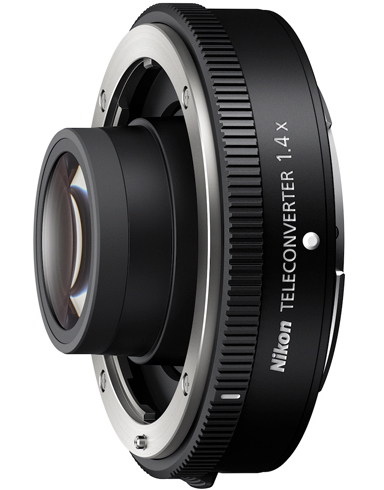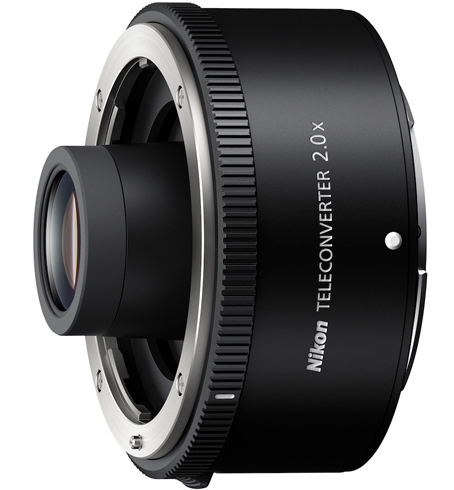

The previously rumored TC-1.4x and TC-2.0x Z teleconverters are now officially announced:
- Sample photos
- US press release
- Pre-order links: Adorama | B&H | Amazon | Park Cameras | WEX
Nikon releases the Z TELECONVERTER TC-1.4x and Z TELECONVERTER TC-2.0x
July 21, 2020
Expand the shooting range of telephoto lenses — the first teleconverters for the Nikon Z mount system
TOKYO – Nikon Corporation (Nikon) announces the release of the Z TELECONVERTER TC-1.4x and Z TELECONVERTER TC-2.0x, two teleconverters for the Nikon Z mount system’s full-frame (Nikon FX format) mirrorless cameras.
The Z TELECONVERTER TC-1.4x and Z TELECONVERTER TC-2.0x are teleconverters that increase the focal length*1 of the main lens by 1.4x and 2.0x, respectively, while making the most of the superior optical performance of NIKKOR Z lenses*2. Use of these teleconverters does not change the minimum focus distance, allowing users to capture their subjects in larger size than with the main lens alone. Furthermore, they consistently utilize the AF and VR performance of the main lens for a comfortable shooting experience. In addition, these teleconverters offer the same superior dust- and drip-resistance*3 as S-Line*4 NIKKOR Z lenses. Also, a fluorine coat that ensures excellent anti-fouling performance is applied to the extreme front and rear lens elements. These factors enable users to concentrate on shooting, even in the harshest environments.
The Z TELECONVERTER TC-1.4x and Z TELECONVERTER TC-2.0x, which expand NIKKOR Z lens’ power of expression in the telephoto range, respond to the expectations of professional and advanced amateur photographers with outdoor photography of a broad range of subjects, including wildlife, landscapes, aircraft, and sporting events.
When the Z TELECONVERTER TC-1.4x is used with the NIKKOR Z 70-200mm f/2.8 VR S, the focal length on the telephoto end is extended to 280 mm. When the Z TELECONVERTER TC-2.0x is used, it increases to 400 mm for significant expansion of this telephoto lens’ shooting range. These new teleconverters will also be compatible with applicable interchangeable lenses for Nikon Z mount mirrorless cameras that are planned for release in the future. They are certain to stimulate user creativity by expanding the breadth of imaging expression.
Nikon will continue to pursue a new dimension in optical performance while meeting users’ needs, contributing to the development of imaging culture, with the hope of expanding possibilities for imaging expression.
- *1Mounting lenses on a teleconverter reduces their speed (effective aperture, or “brightness”): by one stop in the case of the TC-1.4x and by two stops in the case of the TC-2.0x.
- *2Firmware for the cameras must be updated to the latest available versions before use.
- *3Thorough dust- and drip-resistance is not guaranteed in all situations or under all conditions.
- *4The S-Line is a newly designated grade of NIKKOR Z lenses that adhere to a new benchmark in optical performance, creating new definitions of design principles and quality control.
Primary features
- Teleconverters for full-frame mirrorless cameras that make the most of the performance of the main lens and extend its focal length by 1.4x or 2.0x, while further expanding the breadth of telephoto expression.
- Using these teleconverters does not change the minimum focus distance of the main lens. They simply allow users to bring their subjects even closer while shooting.
- Optical designs that minimize the various aberrations that can occur when teleconverters are used, making the most of the superior rendering power of the main lens.
- These teleconverters utilize the superb AF and VR performance of the main lens, enabling reliable capture of decisive moments.
- They are reliably protected from dust and drips with the adoption of effective sealing on various sections as well as rubber lens-mount gaskets on both the lens and camera mounts.
- Adoption of Nikon’s original fluorine coat on the extreme front and rear lens elements ensures dust- and drip-resistance, and makes removing dust and water droplets easy if they do adhere to the lens.










